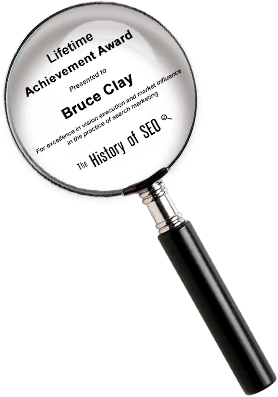SEO Update – August 2010
Welcome to our monthly SEO update for August 2010. This update highlights key news in the SEO industry during August 2010, key SEO related blog posts from our bloggers in the US and Australia, key articles covered in our global newsletter and key podcasts from our Webmaster radio show.
1. SEO News
Key news items for August:
a) Google Instant
The key update from a search engine user’s perspective is the release of Google Instant. Google has made no secret of their desire to make finding information on the web easier and faster and Google Instant is another step in that direction. The new search interface predicts your search query and updates the search results as you type, thus providing more results for users to scan and select from, in the same time it takes to type a query. Their motive is based on the idea that people read faster than they type, and the time taken to enter a query could be used more effectively. Currently Google Instant is only appearing in google.com and for users that are signed into their Google account. This is being rolled out to other geographies over the coming weeks.
Implication: One important fact to remember is that this is a change to the user interface and not rankings. Google states explicitly that the change will not impact ranking of search results. Please read this post on our blog for further information on the impact of Google Instant on search behaviour, rankings and SEO traffic.
b) Google ranking more than two pages from a domain
One announcement that got us excited here in the office was Google adding ‘brand stacking’ to their algorithm. Previously, each website could only rank twice for each search query, even in the cases of brand related searches. This change has relaxed that restriction and search results can now include more than two results from one website, for search queries that indicate a strong user interest in a particular domain. As an example, see the Google search for centrelink, which has 7 results on page one from www.centrelink.gov.au.
Implication: The change is significant because it provides more ranking opportunities for certain types of searches and in some cases, brand related searches. This allows brands to dominate rankings for brand searches, and thus minimise the effects of negative content ranking and harming their reputation. Websites looking to take advantage of the change should consider focusing their internal linking to the pages they want to rank and optimising those pages for brand related keywords. Also, Google wants to list the authority pages for each search, so if one website carries all the authority for the brand it is more likely to stack the rankings. Diluting the authority across other online properties may make brand stacking more of a challenge.
c) Yahoo powered by Bing
After much talk of the Yahoo! and Bing alliance, the search engines have announced the Yahoo! organic search results are now powered by Bing. This transition has taken effect for the web, image and video searches on both the desktop and mobile versions of Yahoo! Search in the US and Canada, with the rollout to soon happen globally. In a recent interview, Bruce Clay had some useful insights into what the ‘powered by Bing’ description will actually mean. He states that Yahoo! and Bing will only share the Bing index. That means Bing will take care of the spidering and filtering of the web, while Yahoo! will use its own algorithm and provide unique results.
Implication: Yahoo! should not yet be discounted as an important search engine to optimise for. It appears that the Yahoo! and Bing alliance will be sharing the back end technology and the front end will remain unique. Ensure your website has a Bing Webmaster Tools account as this will inform you of crawling and indexed information affecting both Yahoo! and Bing results.
d) YouTube transcribing audio
Direct from Kate’s time in the States attending Bruce’s latest 5 day SEO course, she enlightened us on Bruce’s new additions to his training. One addition he spoke of is the audio transcribing feature now available in YouTube. In the past, YouTube has relied on video owners providing transcripts of the spoken words in the audio for indexing and Closed Captions. This appears now to be not necessary, with YouTube able to transcribe the audio automatically. This appears to be an advancement on content in Closed Captions being a video ranking signal. The feature is present in some YouTube videos, with Google’s official YouTube Channel leading the way by providing the feature for most of their videos. Below the video, the complete transcript of the audio is presented, with the time of each line spoken, allowing users to jump to any part of the video they wish.
Implication: With the rise in usage of Universal Search, optimising videos is becoming more and more important. A well optimised video can provide another ranking opportunity and build brand awareness. By YouTube now automatically transcribing videos, adding keywords to video content is just as important adding them to web pages. For optimising videos, follow the same processes as when optimising text, try to state the keyword focus at the beginning and then ensure the keywords are used naturally throughout the video.
2. Blogs
Key blog posts in August:
- The Rewards of Quality Information Architecture
- Facebook Marketing – Facebook Page Optimisation
- Duplicate content at Search Engine Strategies San Francisco
- Eyetracking Research Update by Shari Thurrow
- Web Analytics at SES SF with Tami Dalley (Director, User Experience Optimization)
- 10 Essential Tips on Writing for the Web
3. Newsletter
Key newsletter articles in August:
- Feature: Google Analytics Tracking Code and Page Speed
- BACK TO BASICS: I Don’t Want to Talk about Title Tags
- INTERNATIONAL: Robots Exclusion Protocol Reference Guide
4. Webmaster Radio – SEM Synergy
Key podcasts in August:
- International SEO and Online Communities with Ben Huh
- Shifting SERPS & Social Media Branding Lessons
- SES Preview, In-House SEO and Net Neutrality
- Passion in Business and Community Building
5. Bruce Clay Training Courses
The next training dates are as follows:
- ½ day Copywriting for the Web & SEO – October 12th – Sydney
- One day SEO training – November 17th – Sydney
The date for the next three day SEO Training course has yet to be finalised, but will be in the first quarter of 2011. For more information on training, visit our SEO training site.
26,000+ professionals, marketers and SEOs read the Bruce Clay Blog
Subscribe now for free to get:
- Expert SEO insights from the "Father of SEO."
- Proven SEO strategies to optimize website performance.
- SEO advice to earn more website traffic, higher search ranking and increased revenue.

LEAVE A REPLY









